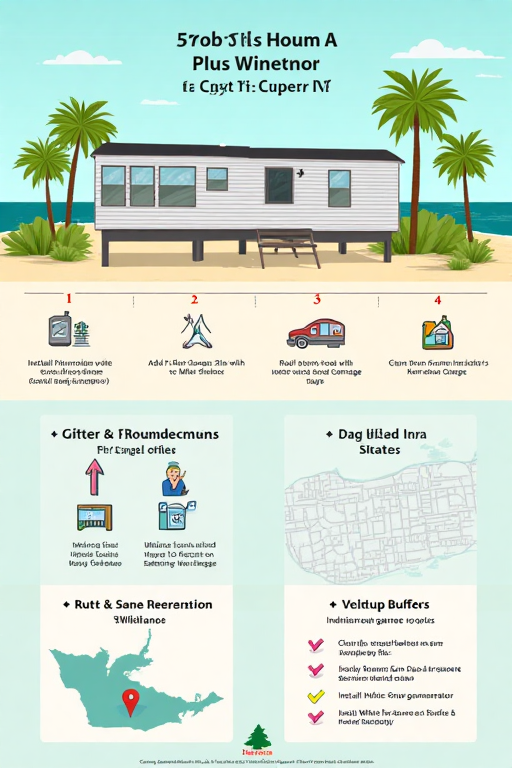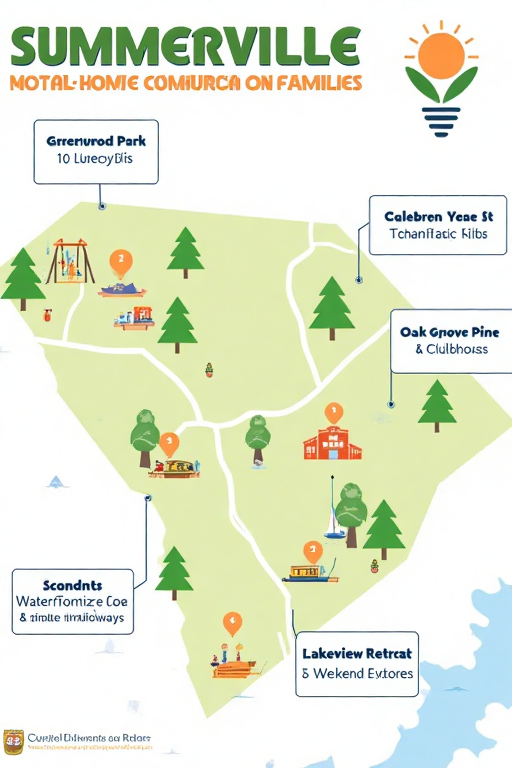How to Keep Your Mobile Home Warm in Rock Hill, SC Winters
Practical Winterizing Tips from Faith Mobile Home Solutions
Table of Contents
1. Introduction
Winter in Rock Hill, SC brings chilly nights and occasional freezes that can challenge mobile homes designed for warmer climates. Proper winterizing not only keeps you comfortable but also reduces energy bills and protects your home from cold-related damage. In this guide, we share practical steps—from insulation tweaks to heating tips—to ensure your mobile home remains warm all season long.
2. Understanding Rock Hill Winters
Average winter temperatures range from lows in the mid-30s to highs in the mid-50s. While extreme cold is rare, temperature swings and wind can cause heat loss. Recognizing these patterns helps you target the most vulnerable areas of your home.
3. Insulation Upgrades
Enhancing insulation is the foundation of a warm home:
- Under-floor Insulation: Install rigid foam board or spray foam under the home to block ground chill.
- Wall Cavities: Blow-in cellulose or batts in accessible walls to boost R-value.
- Ceiling & Roof: Add a layer of reflective foil barrier and loose-fill insulation in the attic space.
4. Air Sealing & Draft Proofing
Eliminate drafts to keep warm air inside:
- Use silicone or acrylic caulk around windows, doors, and plumbing penetrations.
- Install door sweep and weatherstripping on exterior doors.
- Seal gaps in skirting and under cabinetry with spray foam.
5. Efficient Heating Strategies
Select and maintain your heating system wisely:
- Heat Pump: If you have a ducted heat pump, clean filters monthly and schedule an annual tune‑up.
- Electric Baseboards: Keep furniture clear of baseboards and vacuum behind them to improve airflow.
- Propane or Gas Furnace: Replace the filter, inspect vents, and test carbon monoxide detectors.
6. Smart Thermostat Use
Invest in a programmable or smart thermostat to optimize warmth and savings:
- Set lower temperatures when you’re away or asleep, and program gradual warming before you return or wake up.
- Use geofencing features on smart models to adjust settings based on your location.
7. Adding Supplemental Heat
Portable heaters can boost comfort in chilly spots:
- Infrared Heaters: Provide direct warmth to occupants and objects without heating air.
- Micathermic Panels: Slim, wall‑mount heaters that distribute gentle heat evenly.
- Electric Fireplaces: Add ambiance and targeted warmth to living areas.
8. Routine Maintenance
Regular check‑ups keep systems running efficiently:
- Inspect and clean HVAC ducts and vents twice a year.
- Check skirting for damage or pest entry points.
- Test and replace batteries in smoke and CO detectors.
9. Emergency Preparedness
Be ready for power outages and deep freezes:
- Keep a supply of blankets, warm clothing, and portable battery‑powered heaters.
- Have a backup generator and know safe ventilation practices.
- Stock non‑perishable food and bottled water in case roads freeze.
10. Frequently Asked Questions (FAQs)
1. What is the ideal indoor temperature for comfort and savings?
Set your thermostat around 68°F during the day and lower it to 60–64°F at night or when away to balance comfort and energy use.
2. Can I add insulation to an older mobile home?
Yes—retrofit under‑floor and attic spaces with spray foam or rigid board; wall insulation may require panel removal.
3. Are plastic window films effective?
They reduce heat loss by creating an insulating air gap, but professional-grade films perform best.
4. How do I prevent pipes from freezing?
Insulate exposed pipes with foam sleeves, keep indoor temps above 55°F, and open cabinet doors to warm under sinks.
5. Is closing vents in unused rooms wise?
No—restricting airflow strains the HVAC system. Instead, lower vents slightly and use fans to circulate warm air.
6. How often should I service my heat pump?
Annually—before winter—for filter changes, coil cleaning, and refrigerant checks to maintain efficiency.
7. Will adding rugs help?
Yes—rugs add thermal mass and reduce heat loss through the floor, making rooms feel warmer underfoot.
8. How do I seal gaps in skirting?
Use exterior‑grade spray foam and replace damaged skirting panels to block cold drafts underneath.
9. Are electric space heaters safe?
When used per manufacturer guidelines—on level surfaces, clear of flammables, and never left unattended—they are safe supplemental sources.
10. Can storm doors help?
Yes—adding a storm door creates an extra barrier against drafts and heat loss at the main entrance.
11. Should I cover my windows at night?
Closing insulated curtains or blinds at night adds an extra layer of insulation and reduces heat loss.
12. How do I maintain my furnace?
Replace filters monthly, vacuum around the blower, and schedule annual inspections with a qualified technician.
13. Is sealing ductwork important?
Absolutely—leaky ducts can lose up to 30% of heated air. Use foil tape or mastic sealant on joints.
14. Can I use reflective window panels?
Reflective panels bounce heat back into the room and reduce radiant heat loss, especially on large windows.
15. Do ceiling fans help in winter?
Yes—run fans on low in a clockwise direction to push warm air down from the ceiling.
16. How do I check for drafts?
On a cold day, run a lit incense stick around windows, doors, and skirting edges to see smoke waver at air leaks.
17. Will a dehumidifier help?
Keeping humidity around 30–50% prevents dampness without making air feel colder. Use sparingly in winter.
18. Should I insulate the water heater?
Yes—an insulating blanket reduces standby heat loss by up to 45%, saving energy and keeping hot water ready.
19. How can I lower my heating bill?
Seal air leaks, upgrade insulation, use a programmable thermostat, and maintain heating equipment.
20. Are blow-in insulation kits DIY-friendly?
Yes—many home centers rent blow-in machines, but follow safety guidelines and wear protective gear.
21. Do curtains add warmth?
Heavy, insulated curtains trap warm air inside and can cut heat loss through windows by 10–25%.
22. Can I winterize skirting vents?
Install adjustable vent covers to allow airflow when needed and close them during extreme cold.
23. Are portable propane heaters effective?
They provide strong radiant heat but require proper ventilation and carbon monoxide detectors.
24. How do I protect external plumbing?
Insulate exposed pipes and install frost-free hose bibs to prevent freezing.
25. Where to find professional help?
Contact Faith Mobile Home Solutions at (803) 555‑1234 for winterizing services and advice.
11. Additional Keywords
- mobile home winterizing Rock Hill
- insulate mobile home floors SC
- draft proof mobile home doors
- mobile home skirting insulation
- efficient heat pump mobile home
- Rock Hill winter energy savings
- mobile home ceiling insulation SC
- portable heater safety mobile home
- programmable thermostat mobile home
- mobile home window insulation kits
- protect pipes from freezing SC
- mobile home carbon monoxide safety
- insulate water heater mobile home
- Rock Hill mobile home weather stripping
- vent covers for mobile home skirting
- mobile home attic insulation tips
- energy audit mobile home SC
- Rock Hill cold weather mobile home tips
- micathermic panel mobile home
- infrared heater mobile home
- mobile home ceiling fan winter
- blow-in insulation mobile home
- mobile home pipe insulation SC
- Faith Mobile Home Solutions winter
- mobile home freeze protection



